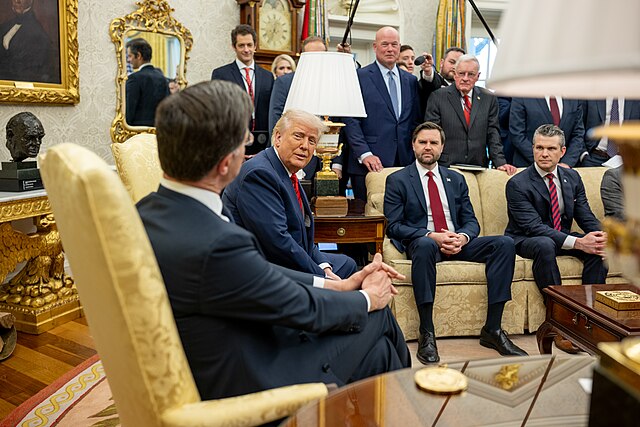Earlier this month (yes, it’s been a long month), President Trump signed a few executive orders aimed at revamping defense acquisition and production that sent the defense tech community abuzz.
The President ordered SecDef Hegseth to create a plan to speed up acquisition using existing authorities and prioritizing commercial solutions. He also called for major defense acquisition programs (MDAPs) more than 15% behind schedule or 15% over cost to be “scrutinized for cancellation,” and for “unnecessary” acquisition regulations to be reviewed.
Sounds like great news for commercial, dual-use, and nontraditional defense companies, right? Well, we wanted to make sure. So we asked a few experts.
Risk appetite: Elaine McCusker, a senior fellow at the American Enterprise Institute (AEI) and former acting under secretary of defense (comptroller), told Tectonic that the EO is “likely to be effective” because it provides a way for people to start bringing more innovative tech into the DoD now, even while the full acquisition overhaul is underway.
“This will give people top cover to innovate and take risk as the [executive order] directs without waiting for all the other required actions and plans to be completed,” she told Tectonic.
She also said that because the EO orders SecDef to focus “performance evaluations on how well the employee uses efficient procurement methods and takes calculated risks in order to innovate,” it’s not just talk—employees will now be incentivized to do things differently.
Other critical points, per McCusker:
- The requirement to “eliminate or revise any unnecessary supplemental regulations or any other internal guidance” in the acquisition process. That should clear up a lot of red tape that is not required by law, she said.
- The full MDAP review should give the EO some real legs.
Bit by bit: Peter Newell, CEO of BMNT, which helps the government work with commercial companies, said that this kind of executive order is 15 years overdue, but warned that it shouldn’t be used to make small, incremental changes.
“The DoD needs to use these EOs to move past studies and reviews and make the legally binding changes to organizational, business and policy structures needed to make sure we defeat our enemies now and in the future,” he told Tectonic.
McCusker’s got a few things she’s keeping an eye on too.
- The order calls for “centralizing decision making,” which she says could create bottlenecks.
- It’s unclear how the “Configuration Steering Board,” which is supposed to “manage risk for all acquisition programs,” will actually work.
Prime opportunity: Jason Brown, general manager for government at Applied Intuition, an automated vehicle company, told Tectonic that these executive orders present opportunity for companies like his.
- AI has had to turn to the commercial market because of “the lack of clarity around the government’s acquisition strategy and accountability around the process of procuring the tech warfighters need,” he told Tectonic.
- This EO, he hopes, will address the “too many cooks” problem in the acquisition process and streamline things to get rid of “unnecessary gates that the government has imposed for no other reason than making organizations feel relevant.” That should make business with the DoD more viable.
McCusker agrees that the EO should be a boon for nontraditional companies, especially through partnerships. Recently, she pointed out that there have been a slew of larger companies like Booz Allen and L3Harris pairing up with newer companies like Palantir and Gecko Robotics.
“These types of shifts could give smaller firms opportunities while presenting the government (and tax payer) with the best of all worlds—creative innovation, mission familiarity and proven production know-how,” she said.

